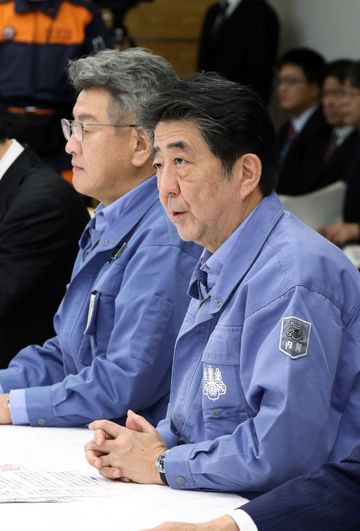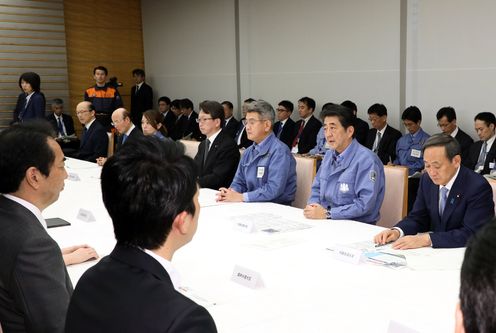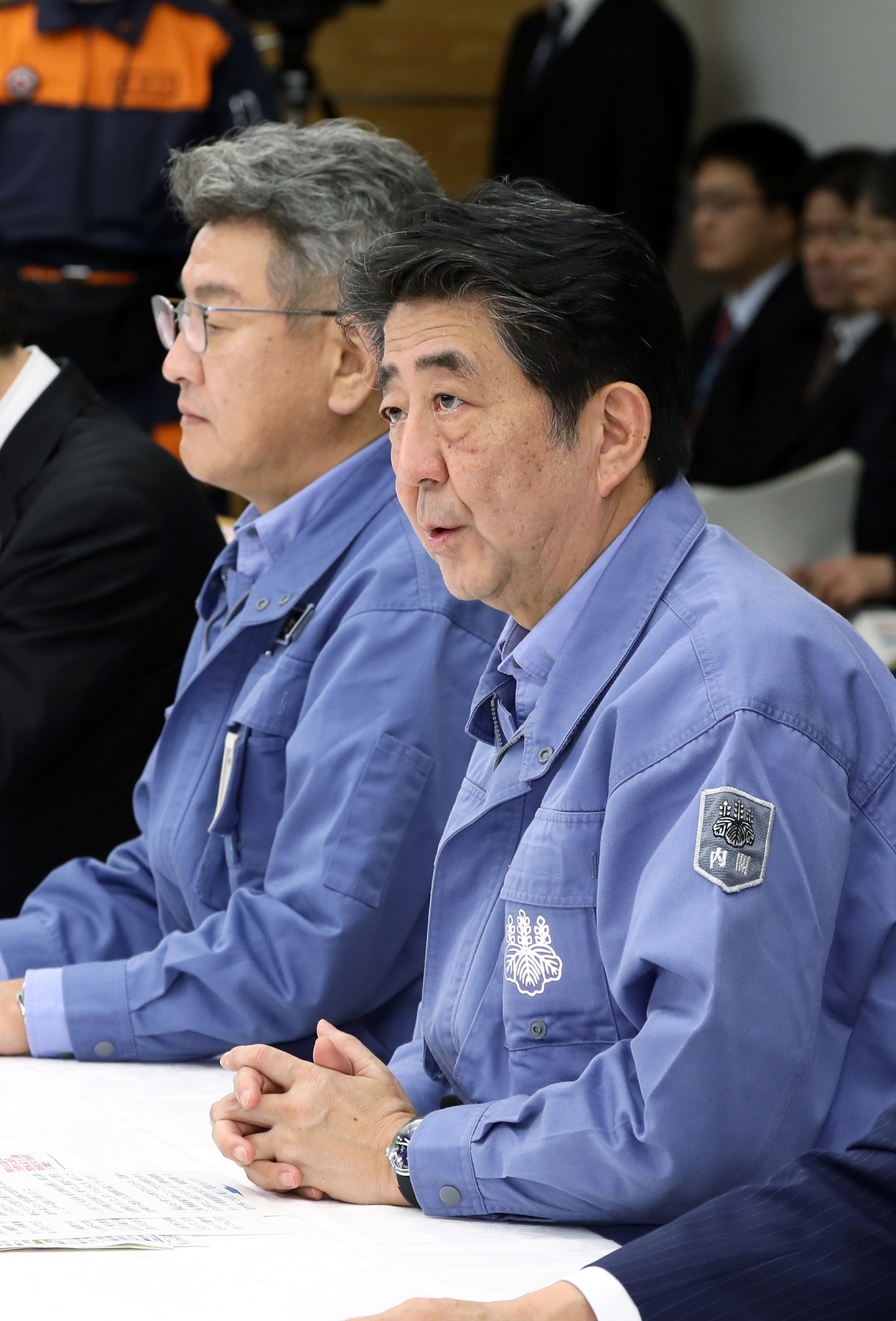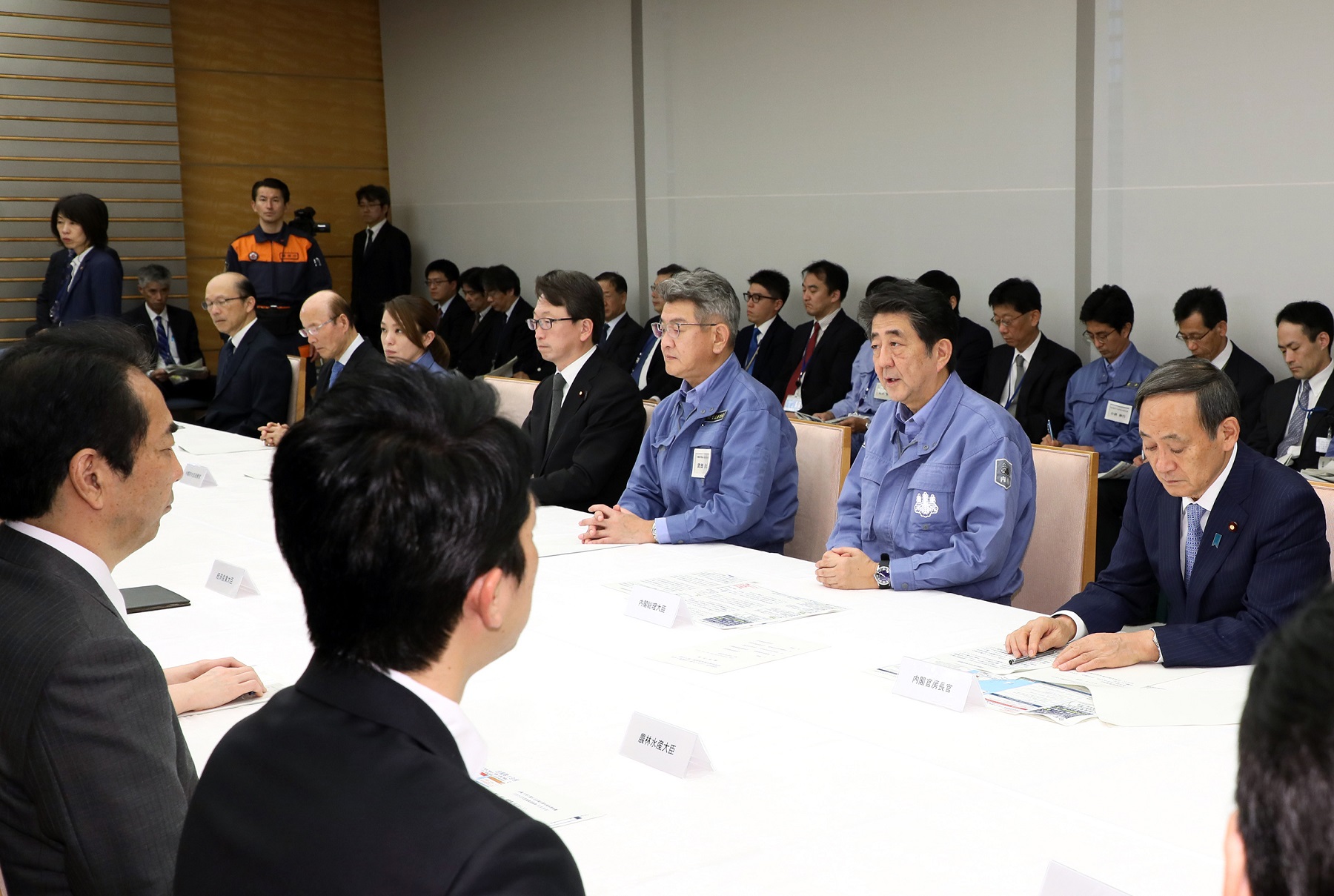Home > News > The Prime Minister in Action > October 2019 > Tenth Meeting of the Emergency Response Headquarters for Typhoon No. 19 of 2019
The Prime Minister in Action
Tenth Meeting of the Emergency Response Headquarters for Typhoon No. 19 of 2019
October 20, 2019

Photograph of the Prime Minister making a statement (1)

Photograph of the Prime Minister making a statement (2)

Photograph of the Prime Minister making a statement (3)
[Provisional Translation]
On October 20, 2019, Prime Minister Shinzo Abe held the tenth meeting of the Emergency Response Headquarters for Typhoon No. 19* of 2019 at the Prime Minister’s Office.
Based on the discussion, the Prime Minister said,
“Today, together with Minister of State for Disaster Management Takeda, I visited several sites affected by the disaster in Nagano Prefecture, and witnessed with my own eyes the immense damage left by the recent typhoon, such as the overflowing of the Chikuma River and the widespread flooding it caused, as well as the collapse of a bridge.
When I heard the stories of those who are affected by the disaster and are facing challenging times at the evacuation centers, and saw the apples that are no longer being shipped as orchards were flooded over during the harvest season, and the massive amount of disaster waste piled up on the roads, I renewed my determination to further accelerate our recovery and reconstruction efforts with the Government working as one.
Up to this point, I have made visits to sites affected by the disaster, and heard various requests or comments directly from the people and local governments affected by the disaster. Furthermore, we have received numerous requests from the affected local governments.
There is a harsh reality that many people in the agriculture, forestry, and fishery industries, and many micro, small and medium enterprises are losing motivation to resume their business, having had the crops that they worked so hard to cultivate be drowned in muddy water, or seeing tremendous damage done to their stores, factories, or equipment facilities due to flooding, while also suffering damage to their own homes. In Tohoku, those who have worked hard over the past eight years have experienced the disaster again halfway through reconstruction from the Great East Japan Earthquake and been greatly shocked. It is necessary to make them see a firm hope for tomorrow.
The reconstruction of lives and ‘nariwai’ (occupations and livelihoods that sustain people's daily lives) must be urgently addressed. Building on the unique elements of each area, we must take steps immediately for securing housing for those affected by this disaster, and the disposal of waste, debris and soil, as well as the resuming of businesses for people working in the agriculture, forestry, and fisheries industries and micro, small and medium enterprises.
There is a total of 500 billion yen available by combining contingency funds and budget for disaster recovery. I ask all of you, in particular the Team to Support the Daily Lives of Disaster Victims, to compile swiftly a policy package towards the rebuilding of the lives and ‘nariwai’ of the people affected by the disaster, utilizing those funds.
We will pay close attention to the feelings and thoughts of those who are being affected by the disaster and continue advancing various measures with the sense of urgency for the affected areas. I ask you to make every effort towards that.”
*Typhoon Hagibis



